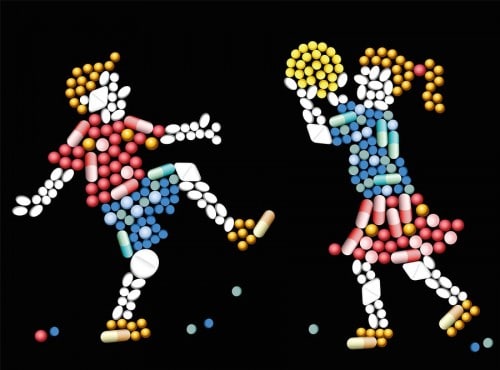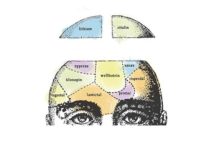Throughout the year, the peer-reviewed journal Frontiers in Psychiatry has published multiple studies on the use of antidepressants for children and adolescents—specifically on whether there is any evidence of benefit despite the well-documented harms. These studies have provided support for the notion that antidepressants are still associated with increased suicides in youth and that there is little, if any, benefit of using the drugs.
Now, Michael P. Hengartner, at the Zurich University of Applied Sciences, Switzerland, has written an editorial in Frontiers in Psychiatry which collates the information published on this topic this year. According to Hengartner:
“The use of antidepressants in children and adolescents has a troubled history, for almost all principles of good evidence-based medicine were violated or compromised. It is a history characterized by systematically biased research, financial conflicts of interest, and professional recklessness.”

Hengartner adds that these issues were acknowledged as far back as the early 2000s. He notes that in 2004, the top-tier medical journal Lancet contained an editorial titled “Depressing Research,” in which the Lancet editors wrote:
“The story of research into selective serotonin reuptake inhibitor (SSRI) use in childhood depression is one of confusion, manipulation, and institutional failure.”
Hengartner also documents the problems with the pediatric efficacy literature: “It is now well-established,” he writes, that the outcome research was almost entirely industry-sponsored; negative trials were not published, so only positive results reached the public, and published trials were ghostwritten. These ghostwritten studies report only positive outcomes, and leave negative outcomes out of the reports. They also don’t report (or misclassify) the prevalence of adverse effects, especially the now-well-documented increased risk of suicide in children taking antidepressants.
The MHRA and FDA recognized some of these issues as far back as 2003 and 2004, respectively, when both regulatory bodies warned the public that antidepressants increase suicidality in children.
Despite these warnings, Hengartner reports that the use of antidepressants in children has skyrocketed in the past 15 years.
Antidepressants Still Linked to Increased Suicidality in Youth
Some researchers have argued that the FDA “black box” suicide warning discouraged the use of antidepressants, and thus the increased suicide rates in children are actually caused by reduced antidepressant use. However, the evidence tells a different story.
Hengartner points the reader to several studies published in Frontiers in Psychiatry this year. In the first, Martin Whitely, Melissa Raven, and Jon Jureidini examined the public health data from Australia. They found a picture consistent with the increasing use of antidepressants linked with increasing suicide rates in children and adolescents (Mad in America also summarized this study).
Whitely, Raven, and Jureidini write:
“There is clear evidence that more young Australians are taking antidepressants, and more young Australians are killing themselves and self-harming, often by intentionally overdosing on the very substances that are supposed to help them.”
By the numbers: Australian antidepressant prescriptions to youth increased by 66% between 2008 and 2018. Australian youth suicides increased by 49% during the same period. Intentional overdoses in youth increased by 98% between 2006 and 2016.
Whitely, Raven, and Jureidini also address how research on the prescription rate and the suicide rate has been misleadingly harnessed to tell a false narrative. For instance, they describe an influential ecological study that falsely associated a drop in prescription rates with an increase in suicides. In fact, they write, the opposite was actually true:
“In 2004, the year in which suicide rates rose, there was no significant decrease in SSRI use; this did not occur until 2005 when youth suicide rates actually fell.”
That is, suicide rates rose before SSRI use fell. Once SSRI use decreased slightly the next year, suicide rates also decreased.
The Evidence for the FDA’s Black Box Warning: Still Valid
Additionally, Hengartner points the reader to a study by Glen I. Spielmans, Tess Spence-Sing, and Peter Parry. They reviewed the evidence used by the FDA to issue the “black box” warning that antidepressants increase suicidality in youth.
They concluded that “the Black Box warning is rooted in solid data, whereas attempts to claim the warning has caused harm are based on quite weak evidence.” (Mad in America also summarized this study.)
Spielmans, Spence-Sing, and Parry reviewed the data from the US, concluding that antidepressant prescription increases were linked to increased rates of suicide in youth.
By the numbers: The researchers note that the FDA hired a blinded panel of suicide experts at Columbia University to review the data. Those experts concluded that antidepressants increased the risk of suicide by 71% and the risk of aggression by 79% compared with placebo.
Antidepressants: Ineffective for Children
Hengartner also summarizes recent evidence regarding whether antidepressants successfully reduce the symptoms of depression in youth. For instance, a study by Daniel J. Safer and Julie Magno Zito found that “ADM short-term trials (usually lasting 8–12 weeks) for youth diagnosed with MDD reveal no meaningful benefit for drugs over placebo in children and a marginal benefit for drugs over placebo in adolescents.” (Mad in America also summarized this study.)
The researchers also looked at longer trials, which suffered from numerous methodological problems such as high drop-out rates, lack of reporting important outcomes (such as relapse rates), and lack of placebo control after the short-term period has ended.
Perhaps most problematic, according to the researchers, is the use of placebo substitution trials. These studies enroll only people who have already responded well to an antidepressant. They randomly assign half of them to continue taking the drug, while the other half are abruptly switched to placebo. The resulting withdrawal effects from abruptly stopping an active drug are then reported as “relapse,” and the study is framed as showing that antidepressants have a relapse-preventing effect.
The authors write that if one does not include these unethically designed studies, the evidence shows no benefit for antidepressants in children, and a statistically significant—but not clinically significant—benefit in youth.
By the numbers: In short-term trials of newer antidepressants, youth improved by 60% on average when taking a placebo versus 65% when taking the antidepressant—a clinically meaningless difference, according to Safer and Zito.
In summary, according to Hengartner:
“Although antidepressant use in children and adolescents has increased substantially over the last 10–15 years, convincing evidence that the benefits outweigh the risks is lacking and treatment-emergent suicidality remains a major concern.”
****
Hengartner, M. P. (2020). Editorial: Antidepressant prescriptions in children and adolescents. Front. Psychiatry, 30 October 2020 | https://doi.org/10.3389/fpsyt.2020.600283














There are a whole lot of benefits in drugging kids.
They cannot speak. They don’t know or are not able to say how their brain
now feels weird and even if they can and do, the lying shrink tells the parents
that it is the sickness, (DISORDER)
Mostly, people can only describe the disorientation post drugs, not while on them, since it
is a disruptive drug, causing all kinds of disconnections. A child cannot articulate
these harms.
So the benefits are to the shrink, and a whole host of people who benefit by harm and disabling
people. The suicides mean zilch to the industry. Nada.
A shrink who plays with children’s brains should consider himself to be part of an underage mind pornography ring. Fully legal. Condoned.
Society is not even close to making it illegal to give brain abortions. They illegalized sterilizing people’s reproductive systems, but the “sterilizing” of minds is in full production.
Report comment
But there are benefits in prescribing antidepressants! These are the profits coming to pharma and opinion leaders, measurable in dollars and cents. The patients are expendable- they are crazy, after all.
Report comment
“Money is the root of all evil.” Until the profit motive is neutered in its capacity to corrupt the evidence even reasoned debate or promoting evidenced based treatments will remain an impossible pipedream.
Report comment
I’m sick of nibbling away at psychiatric and drug company corruption in a piece meal fashion, starting with criticisms of the anti-depressant studies involving adolescents which was used to expand the market for anti-depressants. This data does not simply have implications for minors. It should be considered equally relevant to young adults 18 years and older whose brains are still developing. Many young adults who have a so-called ‘psychotic episode’ between the ages of 18-21 have an established history of taking anti-depressants, with mixed results. Many times adolescents were started on anti-depressants due to issues such as family dysfunctions, issue of identity including sexual identification, or bullying at school. Many were put on anti-depressants and switched quickly or augmented with polypharmacy for years, due to drug ineffectiveness or worse, worsening, drug induced symptoms. Many adolescents who were started on anti depressants experienced adverse drug events or paradoxical effects with the result that they received a cascade of different, worsening diagnoses, or distressing symptoms that landed them inside institutions, a deeply traumatizing event that often occurs in conjunction with undiagnosed iatrogenic harm. We need an immediate moratorium on psychiatric drugging for children until we get a handle on know how these drugs help some and deeply harm others. We just don’t know enough about the human brain to put children at risk any longer. We must ban involuntary treatment for adults until psychiatry can prove scientifically that they can predict the effect that each drug will have on every single involuntarily treated adult. Treatment of children is involuntary treatment. Treatment without fully informed consent should also be banned.
Report comment
Exactly MM. Very well said.
Report comment
“Researchers: Antidepressant Use in Children Increases Suicide, No Evidence of Benefit”
But we must congratulate all the psychiatrists, and mainstream doctors who have been handing the antidepressants out like candy, as “safe … meds,” for decades. For “suiciding” so many children, for profit. The doctors must be so proud?
Oh, that’s right, now that we’re living in Covid-19 times, all the “health care” workers are “heroes,” irregardless of their prior, and continuing, crimes against humanity. Pardon my sarcasm, and disgust.
I totally agree, madmom.
Report comment
I was a child who was destroyed by antidepressants.
I did not grow up with the world and myself like the other.
I had dementia, no emotions, and was so disabled that I was destined to nothing but be an oblivious, demented, hollow and inhuman wreck, without even having had the chance to know what life is and what to be human tastes. In many ways, I was more a monster, a mad creation, than a human.
I also almost killed myself during an AD switch. I was absolutely not suicidal. It felt as if my brain had been hijacked and was obsessed by self-termination, in a very impersonal, robotic way. Very scary.
That society is still discussing the viability of messing with its children brain is profoundly disgusting.
Report comment
So Sorry Exit.
It is beyond disgusting.
I knew I was grossed out by psychiatry…felt as if
I was around something very perverted.
People often don’t realize that their feelings
are to be heeded, or they are feeling to doubtful
or powerless to heed them. Or too young in
life experience to express that feeling or act on it.
It’s a big learning curve to figure it out. To figure
out just what weird biased draconian shit went on.
Report comment
Thank you, Peter!
This piece is so clear, and so so relevant and should be on the front page… but oddly, it’s old news to anyone in the know!
And heaps better to focus on than the dragging election
Report comment
There has never been “evidence of benefit” for “antidepressants” in children. Yet still, they continue to be in widespread use in that population.
Report comment
Why is the conclusion not that “The risks outweigh the benefits for children and they are contraindicated in children. The proposed benefits for youth are slight and do not appear to outweigh the risks, so prescription in adolescents is also inadvisable.”
Report comment
Because Steve, they would have to put that in headlines across the globe and the WHO would have to come clean about the awful harms.
Report comment
madmom
These are very big and profound demands you are making here, AND they are absolutely righteous and scientifically correct.
But these demands can NEVER be realized under the current profit based capitalist system.
Psychiatry and the entire Medical Model have spent several hundred billion dollars on PR campaigns brainwashing the public over the past 4 decades. This mind control, combined with Big Pharma profits, runs very deep in its reinforcement of the status quo.
Psychiatry and all the power it uses as a means of social control in society, is now critically necessary for the preservation of this capitalist system.
We need major systemic change on a massive scale to end all forms of psychiatric oppression.
Richard
Report comment
Very true! The problem is not that the information is not known and available, it is that there are so many people invested in the status quo who stand to lose money or status or both, that the facts are no longer relevant to their analysis. The only consideration is how to maintain power as long as possible before one is caught and held accountable. And this attitude extends very far beyond the boundaries of psychiatry.
Report comment
Yes Richard, I absolutely agree
Report comment
what a terrible problem…many systems are involved..
even some good psychiatrists have a big problem…
they can get sued if a child dies by suicide…no matter what
and we need to keep the good guys around…i need my psychiatrist
to talk to…not for psych drugs…
Report comment